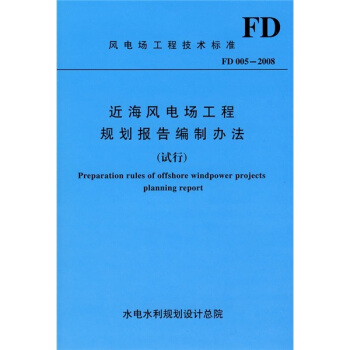![语言与语言学百科全书(第2版)(套装全14册) [ENCYCLOPEDIA OF LANGUAGE &LINGUISTICS]](https://pic.qciss.net/10211394/11211467-7fbe-4b6b-a927-ad3490a49eb2.jpg)

具体描述
内容简介
《语言与语言学百科全书(第2版)(套装全14册)》由外教社从Elsevier出版社引进出版,是迄今世界大的一套语言学百科全书,堪称语言学知识词典的巨制鸿篇。与问世于1993年的《语言与语言学百科全书》(第1版)相比,第2版拓展了语用学、语义学、句法学、词法学、语音学、音系学等范畴,使其内容更丰富、题材更新颖、收录更完备。全书共14卷,收录大词目3000多条,每条词目均有丰富的内容和详尽的解释,除按字母顺序编排外,还有主题分类、交叉检索和主题索引。英国爱丁堡大学马克·斯迪蒙教授概括说:“《语言与语言学百科全书(第2版)(套装全14册)》的编辑和作者群英荟萃。项目范畴之广、规模之大,可谓开创历史之先河。”学术性高、文章内容新、覆盖面广;全新作者撰稿、全新编辑审校、探索全新题材、收录全新文章;横盖六大领域:语言体系研究、言语活动研究、言语机制研究、话语研究、计算语言学研究、文字体系研究。目录
Executive Editorial Board/Honorary Editorial Advisory BoardExecutive Editorial Board Biographies
Publishing History
Foreword
Introduction
Guide to Use
Alphabetical List of Articles
Erratum
Alphabetical Entries
Glossary
List of Languages
Ethnologue Maps
List of Abbreviations
List of Logical Symbols Used
Transcriptional Conventions and the IPA Alphabet
Subject Classification
List of Contributors
Subject Index
精彩书摘
one of the central problems of structuralism, perhapseven its most central one. Greimas then had to postulate the existence of asemantic universe that was defined as the set ofthe systems of values that can be apprehended asmeaningful only if it is articulated or narrativized.Thus, any discourse was said to presuppose a seman-tic universe hypothetically made up of the totality ofsignifications, postulated as such prior to its articula-tion, and which it actualizes in part. This he called amicrosemantic universe that at the fundamental levelarticulates elementary axiological structures, such aslife/death (individual universe) and nature/culture(collective universe). Situated at the deep semanticlevel, these basic structures were considered to be adhoc universals that serve as starting points for theanalysis of semantic universes, be they individual orcollective. Their meaning is never apprehensible assuch but, rather, only when they are manifested inthe form of an articulated signification or, in otherwords, when they are converted into actantial struc-tures. Petitot-Cocorda (1985: 50-51) clearly per-ceived the theoretical import of Greimass semioticswhen he situated the actantial and semionarrativestructures within an anthropological framework. Forhim, the deep semantic categories were considered tobe universals of the imaginary even though indivi-duals were thought not to be conscious of them, asthey exist only because they are both invested withvalues and ideologically invested in objects of value,whose quest governs the actions (actantial and narra-tive programs) of the subject actants. The deep se-mantic categories can be apprehended only throughthe circulation of object-values governed by actantialsyntax. They cannot be subjectivized in themselvesbut only by means of a logic of actions. He notedthat the role of actantial syntax is to convert thefundamental semantics that constitute the messageinto narrative and to determine its anthropologi-cal function. Finally, it is through this actantial andsemionarrative syntax that one can grasp, through thesimulacrum of the scene that dramatizes them, theunconscious processes leading to subjectivity. In The interaction of semiotic onstraints(Greimas and Rastier, 1987), Greimas suggested thepossibility of a generative trajectory, beginning with afundamental semiotic level that was then convertedinto an actantial syntax before ultimately being mani-fested through discourse, but focused especially onthe first domain of the global trajectory. The mainobject of the theory of the semiotic square at thefundamental semiotic level was to articulate the sub-stance of the content and thereby constitute theform of content. This elementary structure shouldbe considered both as a concept uniting the minimalconditions for the apprehension and/or the produc-tion of signification and as a model containing theminimal definition of any language (or, more general-ly, of any semiotic system or process) and of anysemiotic unit. The elementary structure appeared asa complex binary semic category that correlates twocontrary semes by means of a relation of junction(conjunction/disjunction) and by a relation of recip-rocal presupposition, prior to any semantic invest-ment whatsoever. Petitot-Cocordat (1985: 51-52)argued that the constituent relations of contrarietyand contradiction of the semiotic square are not logical in nature, but in the Jakobsonian sense are qualitative oppositions and privative oppositions and must be treated as such. The formal characteristics of the semiotic square are founded on a dynamic topol- ogy of places and connections and not upon a static logic of terms and connections. Represented graphically in their entirety, the vari-ous components and the interrelationships of the firsttwo levels of the theory of narrativity were workedout in Greimas (1987: 63-83). The semionarrativestructures, constituting the most abstract level orstarting point of the generative trajectory, are presentin the form of a semiotic and narrative grammar.These grammars contain two components (syntacticand semantic) and two levels of depth - a fundamen-tal semantics and a fundamental syntax on the deeplevel, and a narrative semantics and a narrative syn-tax on the surface level. Finally, less deep than theother two, the discursive structures take up the sur-face semiotic structures and set them into discourse.A discursive syntax was identified at this level com-posed of the subcomponents of actorialization,temporalization, and spatialization. The semanticcomponent, or discursive semantics, was said to bemade up of the subcomponents of themantization andfigurativization. The main theoretical problem that arose from thisactantial and semionarrative model is related to thepassage (conversion), on the one hand, from a para-digmatic relation, or a taxonomic morphology, toan operative syntax or syntagmatic relation and, onthe other hand, the passage (conversion) from afundamental abstract syntax to a narrative anthropo-morphic surface syntax and ultimately to a discur-sive-figurative syntax. It can be said that two typesof conversions exist in the theory: horizontal con-versions (dealing with the relations between the syn-tactic and semantic components of each level) and vertical conversions (having to do with the relationsbetween levels).前言/序言
放在读者面前的这套《语言与语言学百科全书》(2006年第2版,共14卷)是由励德爱思唯尔(ReedElsevier)集团出版,在阿姆斯特丹、波斯顿、海德堡、伦敦、纽约、牛津、巴黎、圣地亚哥、旧金山、新加坡、悉尼、东京等地同时发行的大型工具书。这部语言学知识词典第l版于1993年出版,第2版增加了这十余年来语言学发展的新信息。为有效借鉴外国语言学研究成果,加强语言学国际交流,上海外语教育出版社引进了这部语言学百科全书,并嘱我为引进版写篇序言,遂先读为快,浏览了全书。现做简序,以飨读者。一、语言学知识词典的巨制鸿篇现代词典可分为知识词典和语言词典两大类。知识词典包括百科全书,解释词语所代表的科学知识;语言词典解释词语本身的语言特征。当读者不认识或不会使用一个词时,可以查语言词典;当读者不理解词所代表的知识时,就要查知识词典。关于汉语或外语语言词典,学习者几乎人手一册;而关于语言和语言学的知识词典,学习者使用不多。但是,如果深入学习语言和从事语言研究,语言学知识词典则是必备的案头工具书。单卷本语言学词典,中外都出版了一些,如中国的《中国大百科全书·语言学卷》、《大辞海·语言学卷》、《辞海·语言学卷》等,市场上都可以买到。外国的,如法国《语言科学百科词典》分4单元,57项主题,解释了800条语言学术语。这类词典规模小,解释简单,只能满足一般性的查找需要。语言学者在研究中常常需要查找生疏的语言学术语,特别是新的语言学知识,单卷本词典远远不能满足需要。于是,大型语言学百科全书应运而生。这部14卷的大型《语言与语言学百科全书》大词目就有3000多条,每条都有丰富的内容和详尽的解释。词典除按字母顺序编排外,还有主题分类、交叉检索和主题索引。首页的字母索引中,词目下标明册数和页码。主题分类中,把全书按主题分为36区,大部分区域还再分为小区。词目可归于一个或几个区域。词条末尾的交叉检索提供三种信息:1.参见其他词条中对该项目的解释,2.该项目在其他词条中的相似信息,3.指出扩展讨论的材料。词典中除正文词条外,最后一卷还附有民族语言地图、语言列表、术语表、缩略语表、逻辑符号用法表、标音法和国际音标等内容。二、适应现代语言学发展趋势
现代语言学在不同的时期都有其一定的发展趋势。在我的论著中每过一段时间就会概括出这种趋势。例如,1983年我在《现代语言学研究》中说:“当代语言学发展说明:人们从语言体系、言语活动和言语机制三个方面越来越深入地认识语言的本质。”1985年,我在《谈点社会心理语言学》一文中说:“当代语言学又出现一个明显趋势,就是用社会心理语言学、社会信息语言学等第二代边缘学科的理论和方法,研究作为交际单位的话语。”1987年,我在《语言学教程》“代前言”中提出8项教学内容的更新:1.语言学的对象是语言体系、言语活动和言语机制。2.语义和语义学的地位越来越重要。3.理论语言学分科对语言体系研究有新的进展。4.当代语言学理论获得广泛应用,改变了语言学理论忽视应用的状况。5.语言学边缘学科涌现,改变了就语言研究语言的状况。6.对传统语言学问题有了新的探索。7.语言学研究的重点从结构转向建构。8.语言学是现代科学体系中的关键学科。1997年,我在《语言学概论》中,又增写了10项新内容:1.语言的调节功能,2.多角度研究语言,3.建构语言学,4.转换生成语言学的发展,5.国俗语义学,6.社会心理修辞学,7.词典的功能,8.建构主义外语教学论,9.社会心理语言学,10.神经语言学。最近几年我又提出语言学建构性循环网络,论述语言学研究中,语言体系、言语活动、言语机制、话语、计算机语言处理和文字体系六大领域及其相互关系。
null
用户评价
说实话,我本来对这种动辄十几卷的“百科全书”是心存芥蒂的,总觉得它们是那些需要“撑门面”的图书馆里才会买的“大部头”,内容可能泛泛而谈,缺乏真正的洞察力。然而,当我开始深入阅读关于“语义学”和“语用学”的篇章时,我的看法彻底颠覆了。我记得有一篇专门讨论“会话含义”的文章,它没有停留在格莱斯的常识性原则上打转,而是深入挖掘了不同社会阶层和地域文化背景下,人们如何“故意不说话”或者“曲解说话的本意”来达到某种社交目的。作者举了一个非常生动的例子,关于在东亚文化圈中,如何通过对“是”和“不是”的模棱两可来维护人际关系的和谐,这种描述的精准度和生活感,是任何网络搜索或普通入门书籍都无法企及的。它真正做到了“百科全书”的承诺:不仅有广度,更有令人震撼的深度。翻阅时,我感觉自己不是在看书,而是在和一群顶尖的语言学专家进行一场跨越时空的、高强度的智力对话,他们对人类表达复杂性的拆解和重构能力,令人叹服。
评分过去我对“应用语言学”的印象仅限于外语教学法,但自从翻阅到关于“计算语言学”与“自然语言处理(NLP)”的章节后,我才意识到这个领域背后的理论基础是多么的深厚。我本来以为这部分内容会是那种充满代码和算法的冰冷描述,但出乎意料的是,它从语言学的角度出发,追溯了早期的句法分析树是如何被引入机器翻译模型的。书中详细阐述了为什么仅仅依靠统计模型在处理歧义句时会遭遇瓶颈,以及语言学家如何通过引入深层语义结构的概念来突破这一限制。我印象最深的是关于“指代消解”的研究,它不仅解释了“他”和“她”在句子中指代不明的难题,还将其置于一个更大的语境和世界知识的框架下进行探讨。这让我意识到,今天的AI技术进步,其根基依然是人类对自身语言规律的深刻理解,而不是单纯的算力堆砌。这本书成功地架起了理论研究与前沿科技之间的桥梁,让应用研究者看到了更坚实的理论后盾。
评分这套书的价值,不仅在于它汇集了汗牛充栋的知识点,更在于它所代表的学术精神和跨学科视野。在我看来,它最独特之处在于其对“语言的社会建构性”的持续强调。我尤其喜欢关于社会语言学和语言接触的那些章节,它们没有把任何一种语言视为孤立的、纯粹的系统,而是将其置于复杂的权力关系、身份认同和地域流动的大背景下进行考察。比如,书中对“代码转换”(Code-Switching)现象的分析,简直是社会心理学和语言学的完美联姻。它揭示了人们在不同社交场合中,如何潜意识地切换语言模式来宣示归属、表达立场或进行微妙的社会界限划分。这种细致入微的观察,远超出了我们日常生活中对“双语者”的刻板印象。每次合上其中一册,都感觉自己对人类交流的复杂性又多了一层敬畏,这套书无疑是为那些不满足于单一学科解释、渴望从多角度理解人类最独特能力——语言——的求知者准备的终极探险地图。
评分作为一名业余研究认知科学的人士,我一直苦于找不到一个能将语言结构与大脑处理机制有机结合的权威参考。这套书的某些分册,尤其是专门讨论语言习得和神经语言学的卷册,简直是为我量身定做的“金钥匙”。我特别关注了其中关于“语言的普遍性语法”的争论部分。书中对乔姆斯基理论的梳理,不仅清晰地呈现了其核心逻辑,更重要的是,它并未回避近年来的批评和修正,而是非常公允地列举了来自认知神经科学的挑战性数据,比如通过fMRI技术观察到的特定语言任务激活区域的差异。这种平衡的、批判性的梳理态度,让我看到了一个学科如何在不断的自我修正中向前发展。阅读这些内容时,我经常需要停下来,反复咀嚼那些关于“模块化”与“分布式处理”的论述,它迫使我重新审视自己对于“心智”的既有认知框架。对于任何希望超越表面现象,探究语言如何内嵌于人类生物本质中的读者来说,这部分内容是不可多得的财富。
评分这本厚重的典籍,初捧在手,便觉一股学究气扑面而来,字里行间流淌着严谨治学的气息。我是在整理我父亲遗留下来的旧书堆时发现它的,那时的我,对“语言学”这三个字还停留在高中语文课本的模糊印象中。起初只是好奇,随手翻开其中一册,就被里面对“音位学”的剖析所吸引。作者并没有采用那种枯燥的教科书式论述,而是用一种近乎于讲述侦探故事的笔法,层层剥茧地揭示出人类语音系统的内在逻辑。特别是关于某些失传方言中“喉塞音”的变异案例分析,简直妙不可言,那种将语音学理论与历史语言学考察完美结合的叙事方式,让我这个外行人也能窥见学科深处的精妙。我尤其欣赏它在处理跨文化语言接触现象时的细腻,比如在探讨克里奥尔语形成过程中,不同母语底层结构如何相互作用、最终“择优录取”出一种新系统的论述,简直是语言人类学的迷你教科书,读完之后,我对“说话”这件事的理解,从单纯的“交流工具”升华为对人类心智结构与社会建构的深度探索。这本书的排版也十分讲究,小小的边注里常有引人深思的拓展阅读建议,让你的求知欲像野草一样疯长,根本停不下来。
相关图书
本站所有内容均为互联网搜索引擎提供的公开搜索信息,本站不存储任何数据与内容,任何内容与数据均与本站无关,如有需要请联系相关搜索引擎包括但不限于百度,google,bing,sogou 等
© 2026 book.teaonline.club All Rights Reserved. 图书大百科 版权所有



![英俄汉综合粉末冶金词汇 [Comprehensive english-russian-chinese dictionary on powder metallurgy] pdf epub mobi 电子书 下载](https://pic.qciss.net/10277198/484d8bf4-a031-4112-8551-81b814b94ab5.jpg)


![简明汉德词典 [Chinesisch-Deutsches Handworterbuch] pdf epub mobi 电子书 下载](https://pic.qciss.net/10285903/7653b34f-ebc9-42e4-8c73-e8635cca2d8a.jpg)





![英汉·汉英水污染科学词汇 [English-Chinese and Chinese-English dictionary of water pollution science] pdf epub mobi 电子书 下载](https://pic.qciss.net/10319280/9313bef4-717c-4f95-ab70-7f7c9322ce54.jpg)







